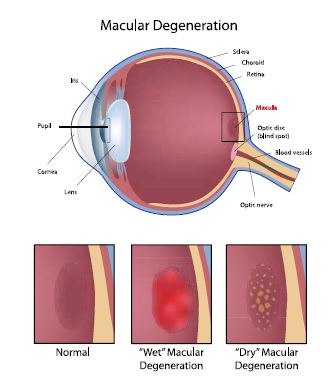Bascom Palmer Eye Institute discovers clues about what causes macular degeneration
by Jaclyn L. Kovach, MD
 What causes age-related macular degeneration (AMD)? Patients pose this seemingly simple question to me every day. For the past seven years, my colleague Dr. Stephen G. Schwartz, MD, MBA and I at the Bascom Palmer Eye Institute (BPEI) in Naples have collaborated with geneticists at the John P. Hussman Institute for Human Genomics (HIHG) at University of Miami Miller School of Medicine to try to answer that very question.
What causes age-related macular degeneration (AMD)? Patients pose this seemingly simple question to me every day. For the past seven years, my colleague Dr. Stephen G. Schwartz, MD, MBA and I at the Bascom Palmer Eye Institute (BPEI) in Naples have collaborated with geneticists at the John P. Hussman Institute for Human Genomics (HIHG) at University of Miami Miller School of Medicine to try to answer that very question.
As it turns out, the etiology of AMD is complicated. There are many factors that increase an individual’s risk of developing this potentially blinding condition. Age is the most important risk factor, as AMD affects only patients over 50 years of age. A history of tobacco use, hypertension, and hypercholesterolemia (lifestyle factors) are also believed to play a role, but genetics are thought to account for up to 80 percent of one’s AMD risk. Age-related macular degeneration is a strongly inherited disease and is commonly passed down through families. Genetic risk factors interact with lifestyle factors to determine one’s risk of developing AMD and how the condition progresses.
 Prior to 2005, the genetic risk factors for AMD were unknown. At that time, we simply knew that there was a strong hereditary component to AMD risk. Margaret Pericak-Vance, PhD, director of the HIHG who is the principal investigator for our current collaboration was one of the researchers who identified the first and most powerful genetic risk factor for AMD, complement factor H (CFH).
Prior to 2005, the genetic risk factors for AMD were unknown. At that time, we simply knew that there was a strong hereditary component to AMD risk. Margaret Pericak-Vance, PhD, director of the HIHG who is the principal investigator for our current collaboration was one of the researchers who identified the first and most powerful genetic risk factor for AMD, complement factor H (CFH).
An abnormal CFH gene can lead to unregulated inflammation in the retina and promote the development of AMD.
Since 2010, Dr. Schwartz and I at BPEI and the geneticists at HIHG have collaborated with other well-known national and international AMD researchers with the goal of identifying other genetic factors associated with AMD through an international group called the AMDGene Consortium. Created by the National Institute of Health’s National Eye Institute, the AMDGene Consortium has conducted a type of large research study call a genome wide-association study (GWAS) to identify the genes associated with AMD. In 2013 the Consortium published a landmark article identifying seven new genetic risk factors for AMD which to date brings the total of known genetic AMD risk factors to 19 genetic loci. The more we learn about the genetic abnormalities that play a role in the development of AMD the closer we get to the prevention and better treatments for AMD.
To date, this fruitful BPEI and HIHG collaboration has authored over 100 peer-reviewed articles and national scientific meeting presentations that have contributed to the current state of knowledge of AMD. This research would not be possible without the help of over 1,000 of our Naples patients who have so generously agreed to participate in this ongoing genetic research project for AMD. For more information regarding our research at the Bascom Palmer Eye Institute in Naples, please call 239.659.3937 and ask for Rosanny Larach, our
research coordinator.

Leave a Reply
Want to join the discussion?Feel free to contribute!